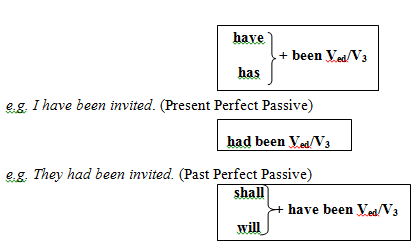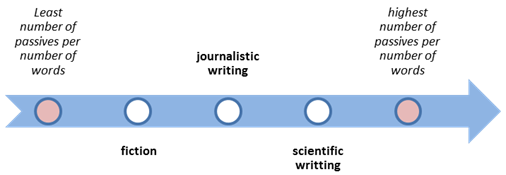CONTENTS
CHAPTER I ACTIVE AND PASSIVE VOICES. RULES AND EXCEPTIONS 3
1.1 Active voice 4
1.2 The passive voice as the grammatical category of the verb 7
CHAPTER II THE VOICES AND PECULIARITIES OF THEIR TRANSLATION IN NOVEL C.S. LEWIS “THE SILVER CHAIR” 12
2.1 The peculiarities of the translation of the passive voice in the literature 12
2.2 The peculiarities of the translation of the active voice in the literature 16
CONCLUSION 20
LITERATURE 22
APPENDIX 23
CHAPTER I ACTIVE AND PASSIVE VOICES. RULES AND EXCEPTIONS
The verbal category of Voice is an expression of relationship between an action and its subject and object. In other words, as a grammatical category, Voice shows the relation between the action and its subject, namely, it indicates whether the action is performed by the subject or passes on to it. As a result, Voice is connected with the sentence structure more than other verbal categories. There are two voices in English:
The Active Voice, that shows that the action is performed by its subject, i.e. that the subject is the doer of the action.
e.g. James sent me a letter.
The Passive Voice that shows that the subject is acted upon, that it is the recipient of the action.
e.g. A letter was sent to me by James.
The opposition is based on the direction of an action. According to the traditional approach to Voice, verbal forms, among other peculiarities, indicate relations between an action and its subject, i.e. Active Voice is used to denote actions directed from the person or thing expressed by subject, whereas Passive Voice forms show that an action is directed towards the subject [1; 123].
Some scientists distinguish more voices in the English language.
An issue of importance concerns the semantic differences that exist between the active and the passive voice. First of all, passive and active sentences may sometimes differ in meaning – e. g. as Chomsky (1965) and Lakoff (1968) have pointed out, the active and passive sentences in the following two pairs are not completely synonymous.
According to Chomsky:
Everyone in the room speaks two languages. (i.e., any two languages per person)
Two languages are spoken by everyone in the room. (i.e., two specific languages that everybody speaks)
According to Lakoff:
Few people read many books. (i.e., There are few people in this world who read lots of books.)
Many books are read by few people. (i.e., There are many books that are read by very few people.)
Second, there are active voice sentences with surface structure objects that do not have a passive equivalent since the verbs are not truly transitive, e.g.:
Mike has a car. - *A car is had by Mike.
Roger weighs 200 pounds. - *200 pounds was weighed by Roger.
Likewise, there are passive sentences in English that have no Active Voice variant, e.g.:
Mehdi was born in Tehran. - *Someone bore Mehdi in Tehran.
It is rumored that he will get the job. - *Someone rumors that he will get the job.
With certain verbs and in certain situations either the Active or the Passive Voice must be used exclusively [5; 224-225].

CHAPTER II THE VOICES AND PECULIARITIES OF THEIR TRANSLATION IN NOVEL C.S. LEWIS “THE SILVER CHAIR”
2.1 The peculiarities of the translation of the passive voice in the literature
From the text above translator translated the SL passive voice is called translated into зовут in TL. The passive construction in SL is formed by auxiliary verb be + past participle (is + called). It can be seen the tense that used in SL is simple present, the characteristics of passive in simple present is be (am/is/are) + past participle. Translator translated SL into Russian passive type one that has characteristics subject (patient) + verb + agent (actor). Ее as subject (patient), зовут as verb and Jill (Джил) as the agent (actor). In this sentence called has meaning “have” (у нее есть имя). In here is called which is grammatically form by be + past participle (is + called) translated into lexicon зовут in Russian. So there is a level shift changing from grammar into lexical. Shift also happen in category, especially in class shift because the translator translated called which is as noun in TL into зовут which is as verb in SL.
Example 2:
There were no hills to be seen. (page 29 line 13)
Никаких холмов не было видно.
From the text above, the translator translates the SL passive voice be seen into видно in TL. The passive construction in SL is formed by auxiliary verb be + past participle (be + seen), and in TL is formed just verb base (видно). The tense that used in SL is simple present, the characteristics of passive in simple present is be (am/is/are) + past participle. Translator translated SL into Russian passive type one that has characteristics subject (patient) + verb + agent (actor). In here, the translator used verb based to translate the English passive voice it because verb base is one the way expressed Russian passive voice. In this text, be seen which is grammatically form by be + past participle (be + seen) translated into lexicon видно in Russian. So there is a level shift changing from grammar into lexical. Shift also happen in category, especially in class shift because the translator translated be seen which is as adverb in TL into видно which is as verb in SL. Actually the word видно in Russian usually combine with насколько мог видеть взор or в поле зрения. The translator used видно to represent the distance that eyes caught. But does not matter the translator used видно as target language because the translator make more varieties.
Example 3:


